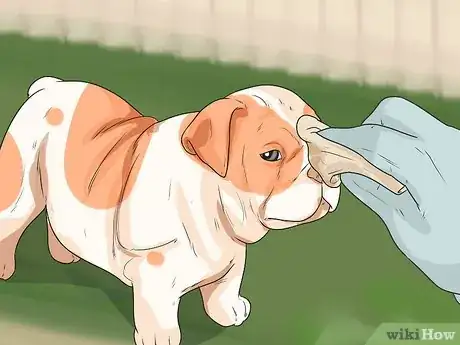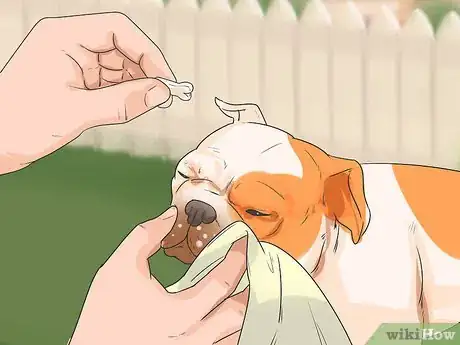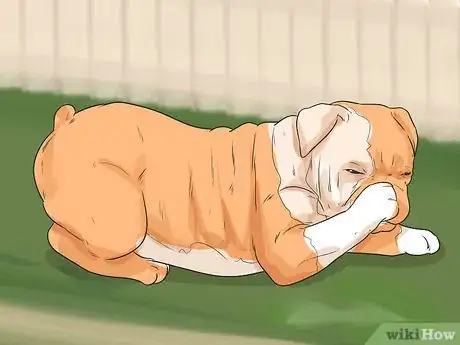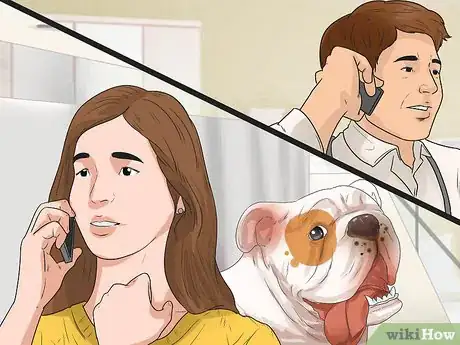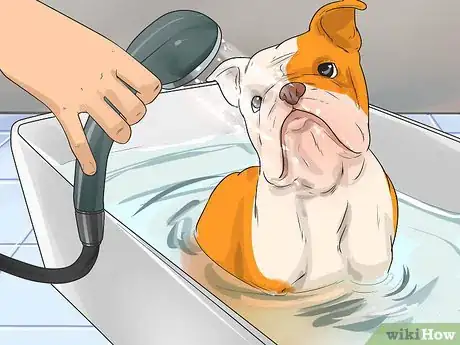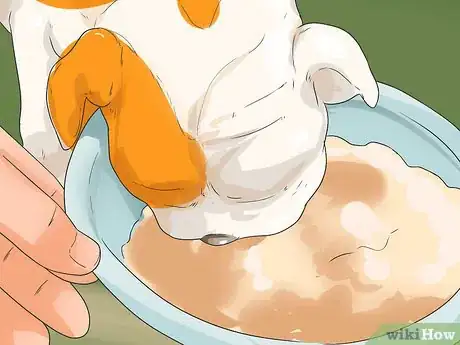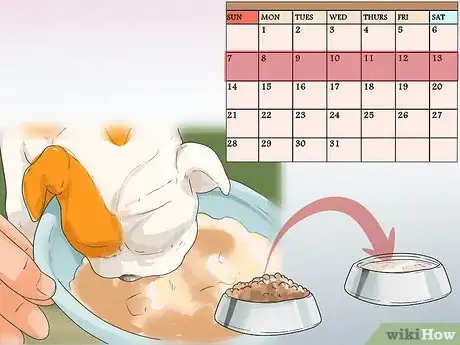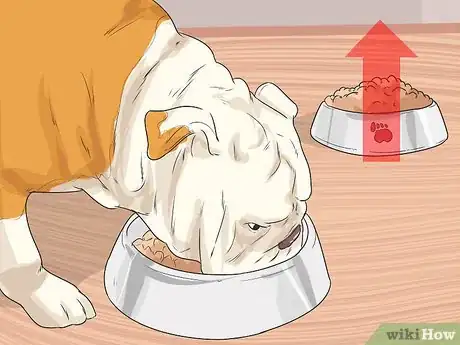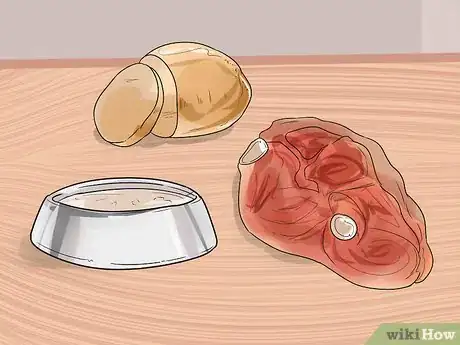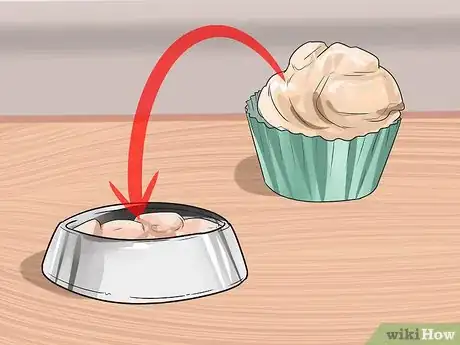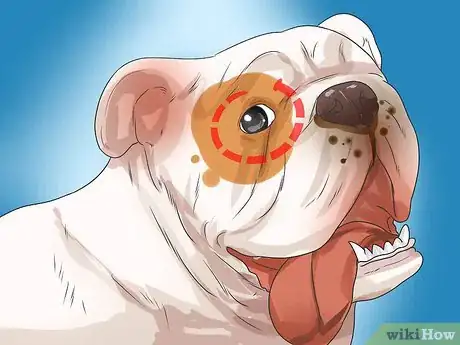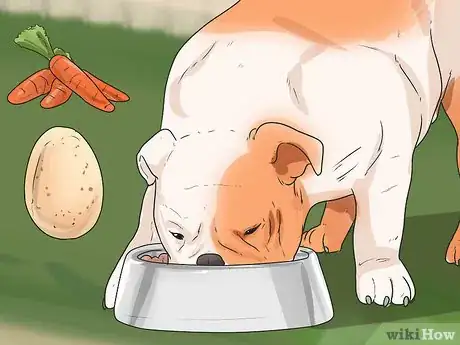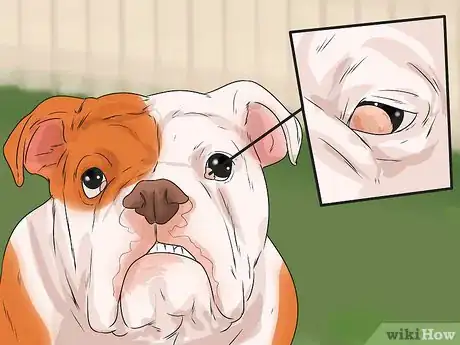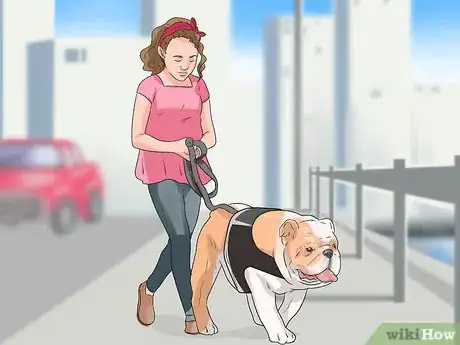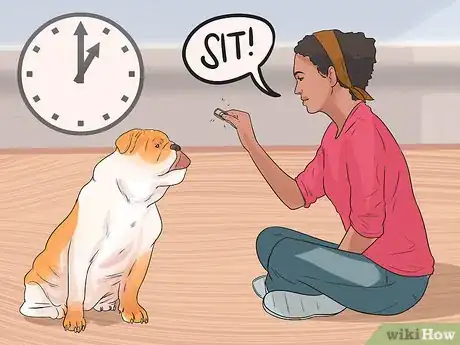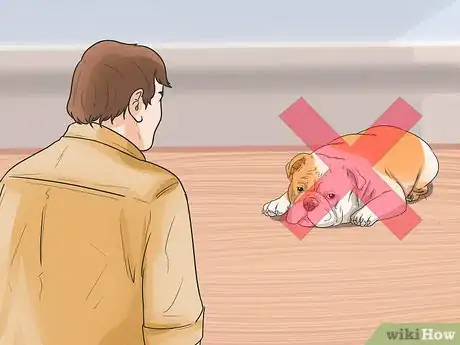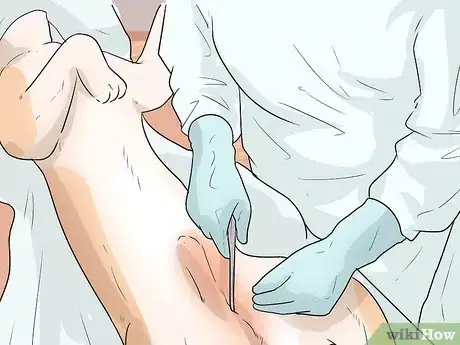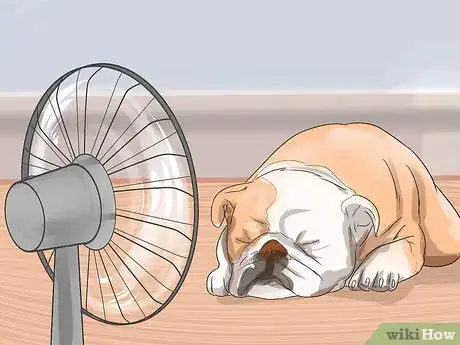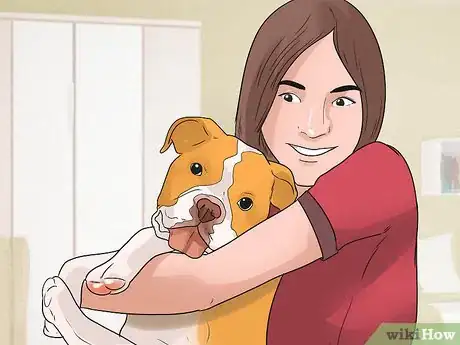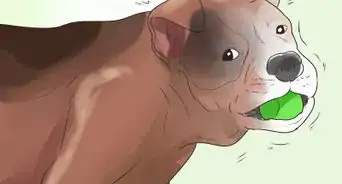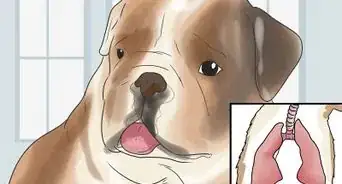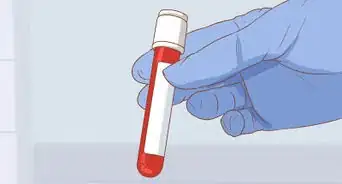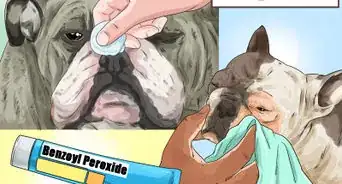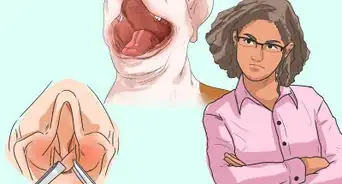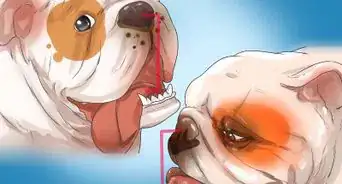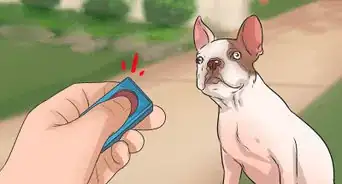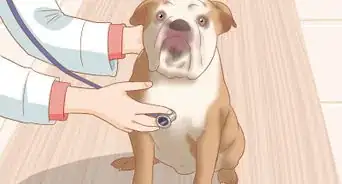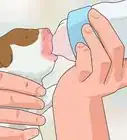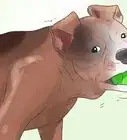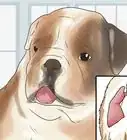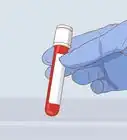This article was co-authored by Amanda Marshall-Polimeni. Amanda Marshall-Polimeni is a Dog Behavior Consultant and the Owner/Founder of FurryTales in New Jersey. With a deep understanding of behavioral learning theories and a passion for the physical and psychological well-being of animals, Amanda specializes in using non-coercive, reinforcement-based approaches to generate desired behaviors. Amanda holds a BASc in Applied Psychology from NYU and is a Certified Professional Dog Trainer - Knowledge Assessed (CPDT-KA) and Certified Behavior Consultant Canine (CBCC-KA). She has also completed a Master’s Course in Aggressive Dog Training. Her initiative and dedication to quality, comprehensive animal care at FurryTales led to her recognition by Grow by Acorns + CNBC.
There are 20 references cited in this article, which can be found at the bottom of the page.
This article has been viewed 85,542 times.
With a lovable appearance and gentle manners, the English bulldog makes a great pet. Keeping it healthy is a challenge due to its many inborn physical deficiencies. However, taking care of its skin will go a long way to keeping your dog healthy. In addition, you can show that you care for your doggie by walking it daily, feeding it a healthy diet, and taking it for regular vet checkups.
Steps
Taking Care of Your Dog’s Skin
-
1Wipe between your dog’s folds with an anti-fungal wipe. Because English bulldogs’ skin is layered in folds, it is susceptible to diseases like yeast intertrigo, a condition which leads to itchy rashes on the skin. Wiping between your dog’s folds one time each day will prevent this.
- Choose the right wipe for your dog’s skin. Use a nontoxic anti-fungal wipe. Try to choose one with many natural ingredients like cucumber and chamomile.[1]
- Avoid wipes that have many chemicals and additives. If you have concerns, ask your vet for a recommendation as to which anti-fungal wipe is best for your dog.
-
2Begin cleaning your dog’s skin folds early. If you wait until your dog has already developed a rash within its skin folds, it will cause your dog pain when the skin is finally cleaned. Start daily cleaning with your dog from the time it is a small puppy.
- Familiarize your dog with the cleanup process by having it sit in the same spot every time you begin the cleanup.
Advertisement -
3Make the cleaning process enjoyable for your dog. If your dog comes to associate cleaning within its skin folds with pain, your job will be that much harder, and cause your dog undue stress. Give your doggie a treat both before you begin the cleaning process and after the process is complete. This way, the dog will come to associate having its skin cleaned with positive feelings and the knowledge that it will soon be rewarded.
- With one hand, part the folds and use your other hand to apply the wipe gently to the skin within. You will probably need to wipe the same area several times, moving the wipe in overlapping swipes along folds of your dog’s body.
- You may need several wipes to complete the job, but your dog will thank you and remain healthy.
- Be sure to wipe its back, tummy, legs, and face. Healthy bulldog skin is smooth and soft. Check your dog’s face for irritation.[2] Facial skin should be loose and wrinkly, but should not hang off the face. Check the belly for redness or signs of itching. If present, these may be signs of springtime allergies.
-
4Keep an eye out for signs of irritation.[3] If your doggie is having skin troubles, it will let you know. If you see your dog constantly scratching, rubbing, or biting itself, this is a sign that your dog’s skin is irritated. Nasty odors -- especially those emanating from the face, groin, ears, and stomach -- might also be signs of irritated skin. You might also observe a brown discharge coming out from between the folds of your dog’s skin.
- When you observe that your dog’s skin may be irritated, investigate why and take proactive steps to solve the problem.
-
5Contact the vet.[4] If you cannot help your bulldog with its irritating skin problems despite your best efforts, contact your vet. Vets are specially trained to deal with severe problems like infected, itching, and dry skin.
-
6Bathe your dog once or twice each year. If you bathe your dog more frequently, you could remove the natural oils which protect its skin.[5] Of course, if your dog starts to smell or has a romp in the mud, bathing is the only option. Generally, though, avoid bathing your dog often.
- Use tear-free shampoo and work it into your dog’s skin folds when bathing. Lather the shampoo and let it sit for a minute or two before rinsing.[6]
Feeding Your Bulldog
-
1Feed your puppy frequently. Young bulldogs need several small meals throughout the day. Your puppy may need to eat up to four times a day as a puppy. Your dog will increase its weight rapidly -- possibly by as much as seven to eight times its birth weight -- within its first twelve months of life. Puppies generally need about 20-70 calories per pound of body weight. For instance, if your pup weighs ten pounds, it will need between 200 and 700 calories each day, depending on its activity level.[7]
- Don’t just leave food out for your puppy. Even though it needs to eat more frequently than an adult bulldog, it is still susceptible to overeating. Removing bowls of food after your puppy has finished will keep it healthy.
-
2Change your dog’s diet slowly.[8] Do not change your bulldog’s diet until it is at least three to four months old. After obtaining your bulldog (of any age), wait at least two weeks before changing its diet. After two weeks, gradually introduce new foods into its diet and alternate new foods with its standard diet. Monitor your dog’s reaction. If it has soft or excessive stool, switch back to the old diet, then try again later to introduce a different new food after two more weeks.
-
3Feed your adult bulldog more as it matures. The caloric needs of your bulldog will depend on its age and activity level. After about 18 months, your bulldog should be treated nutritionally as an adult. Older dogs usually need about 937 calories per day. Typical adult bulldogs need around 1,145 calories each day. A very active English bulldog could need as much as 1,300 calories in a day.[9]
- While puppies require four meals each day, an adult will usually eat just twice each day.
- Use the nutrition label on your dog food to calculate how many calories your doggie is taking in.
- Adult bulldogs can weigh anywhere from 45 to 55 pounds, however, each dog's ideal weight varies depending on frame size. Learn to body score your dog so you can monitor the fat cover over the dog's rib and backbone, and decrease their ration if necessary. Talk to your vet about how much your pet should weigh.
-
4Feed your bulldog a nutritious diet. Your bulldog should receive a healthy balance of protein, carbs, fats, vitamins, and minerals. There are many commercial dog foods available which can satisfy your dog, and some dog foods that are designed specifically for bulldogs. Look for a dog food that is nutritious and ask your vet if you have specific concerns about what your dog is eating.[10]
- Avoid dog foods that are predominately carbs like corn and sugar.[11]
- Dog foods that include high protein contents and slowly-digestible carbs like sweet potatoes and barley are good choices.
- Feed your dog both food and water out of stainless steel bowls. Do not use plastic.
-
5Keep your bulldog within a healthy weight. If your bulldog is overweight, it may have heart, hip, and breathing problems later in life. Obesity also increases your dog’s chances of developing cancer by as much as 20%. You can keep its weight down by feeding it only moderate meals and providing opportunities for regular light exercise like going for walks at the park, or romps at the local dog park.
- Feed your bulldog small kibbles so that it eats slowly. This will prevent both overeating and gas.
-
6Give your dog some variety in its diet. While table scraps can often upset a bulldog’s tummy, there are many ways to include new foods and make fun changes to your dog’s meals.[12] For instance, your bulldog might enjoy apple cinnamon drops.
- To make apple cinnamon drops, you’ll need a large apple, a quarter cup of honey, a half cup of water, a half teaspoon of cinnamon, one cup of oatmeal, one and a half cups of flour, plus another eighth of a cup of flour.
- Preheat your oven to 350 degrees Fahrenheit and mince the apple into small pieces. Combine the apple bits, water, oatmeal, and cinnamon into a dough by mixing together in a large mixing bowl. Place individual spoonfuls of the dough on an ungreased baking sheet spaced about two inches apart.
- Place the eighth of a cup of flour in a small bowl. Rub the bottom of a flat-bottomed cup in the flour and stamp the spoonfuls of dough down on the baking sheet.
- Bake for fifteen minutes, then remove and flip each apple cinnamon drop over. Bake for another fifteen minutes. Then, reduce heat and bake for thirty minutes at 325 degrees Fahrenheit.
-
7Avoid toxic foods. There are many foods that humans find yummy but are toxic to bulldogs. For instance, grapes, raisins, beer, raw bread dough, chocolate or anything caffeinated, garlic, and onions should never be consumed by dogs.[13] English bulldogs, like all dogs, should especially avoid alcohol, grapes, and raisins.
- Foods that are nonfatal but may irritate your bulldog include peas, beans, milk, and fatty or spicy foods.
Caring for Your Dog’s Eyes
-
1Check your dog’s eyes often. There are many problems that can develop in your dog’s eyes. Look closely at your dog’s eyes each day and monitor any unusual changes. Wipe away crusty bits or goop that often accumulates in the corners of bulldogs’ eyes. If you notice a heavy crusty layer and excessively runny eyes, take him to a vet.
- If your dog’s eyelids are rolling inward, it might have entropion, a condition that can lead to tearing, squinting, and ulcers in the eye.
- If your dog’s eyelids are sagging or appear to be rolling down, your dog might have ectropion. Your dog might display signs of dry eyes by blinking with unusual frequency.
- If you observe any of these symptoms, or any other unusual eye problems in your dog, take it to a vet immediately.[14]
-
2Feed your dog foods high in beta-carotene.[15] Beta carotene strengthens the eyes. Foods high in beta-carotene are hard to find in dog food. However, adding small portions of foods high in beta carotene to your dog’s diet can keep its eyes healthy. Sweet potatoes and carrots, for instance, are good sources of beta carotene and dogs love them.
-
3Look out for cherry eye.[16] Cherry eye is a common problem in English bulldogs. The red swelling is a tear gland that has prolapsed forward. It should be kept well lubricated to prevent secondary infections. While it does not usually cause pain for your dog immediately, if it gets infected, it may.
- To treat cherry eye, take your dog to the vet. They will recommend the best course of treatment for your dog, whether that's a surgical procedure, as is usually recommended, or simply showing you how to keep the gland lubricated.[17]
- Dogs eight weeks old or younger usually get cherry eye. In older dogs, surgery may be necessary to correct cherry eye. This procedure involves repositioning the gland back in its original place.
Attending to General Health
-
1Provide light exercise for your dog. English bulldogs are notoriously low-energy animals. Still, they require exercise to stay healthy and engaged.[18] Take your dog on short walks around the block as often as possible.[19] As your dog builds stamina, extend the length of the walks. When the weather is nasty, throw a ball for your dog to chase, or play tug of war with it inside the house.
- Giving your dog a chance to move also gives you and your dog time to bond.
- Your dog might also enjoy playing with other doggies at the local dog park.
-
2Be patient when training your English bulldog. They can be trained, but getting there can be difficult.[20] Start slowly when training your English bulldog. Don’t expect it to learn tricks as fast as your other dogs. Practice a trick for a short time each day -- ten to fifteen minutes per session -- and keep at it.
-
3Don’t overwork your dog. English bulldogs have lower energy levels than other dogs. Their small bodies perform well when going on short walks or playing around the house, but have a hard time running long distances or engaging in vigorous exercise.[21] English bulldogs have flattened noses and so find it more difficult to breathe. It is important to be cautious in hot weather as they are prone to heat stroke. Take them on gentle walks in the cooler parts of the day, stick to the shade, and provide them with plenty of water. Work within the confines of what your dog wants to do. If it is panting heavily or seems lethargic, don’t push it to run around or exercise.
-
4Neuter or spay your dog. Dogs that are neutered or spayed are less aggressive and easier to control than dogs that are not. A neutered/spayed dog is more focused on you than other dogs, and feels less obligated to prove its dominance to you or other dogs. Talk to your vet about setting up an appointment to neuter/spay your dog.
- Neutering/spaying has many other positive benefits, such as lower licensing fees, reduced chance for prostrate disorders, and reduced chance for testicular cancer.[22]
-
5Keep your dog cool. English bulldogs have weak respiratory systems and have even greater difficulty breathing in hot, humid weather. During the hot season, keep your doggie in air-conditioning. Monitor your dog when it plays outside on hot days to ensure it doesn’t tire itself out.[23] Do not leave your dog in a hot house or car.
-
6Give your English bulldog lots of attention and love. Bulldogs thrive off attention from their owners, and it'll help form a bond that will last as long as your Bulldog lives. Let the dog bond with you.
Warnings
- Don't feed your dog any table scraps.⧼thumbs_response⧽
- Beware of falling for a cute little puppy. If you get an English bulldog, be aware of a short life, high health risks, slobbering, and various other problems. Buy from a responsible, highly regarded breeder. This will cost more, but will save you money from medical issues down the road.⧼thumbs_response⧽
References
- ↑ http://redwhiteandbulldogs.com/englishbulldogcare/
- ↑ http://www.mypetreference.com/#!article/how-to/english-bulldog-caring-for-his-signature-skin
- ↑ http://pets.thenest.com/english-bulldogs-irritated-skin-5515.html
- ↑ http://pets.thenest.com/english-bulldogs-irritated-skin-5515.html
- ↑ http://www.bulldoginformation.com/everyday-care-of-your-bulldog.html
- ↑ http://redwhiteandbulldogs.com/englishbulldogcare/
- ↑ http://www.betterbully.com/feeding-your-english-bulldog-puppy/
- ↑ http://www.bulldoginformation.com/Weight_chart.html
- ↑ http://herepup.com/best-dog-food-for-english-bulldogs/
- ↑ Amanda Marshall-Polimeni. Dog Behavior Consultant. Expert Interview. 25 February 2021
- ↑ http://herepup.com/best-dog-food-for-english-bulldogs/
- ↑ http://www.bulldoginformation.com/books-dog-nutrition.html
- ↑ https://www.petcarerx.com/article/the-most-poisonous-foods-for-dogs/248
- ↑ http://www.trimbullbulldogs.com/ectropion.html
- ↑ http://herepup.com/best-dog-food-for-english-bulldogs/
- ↑ http://www.trimbullbulldogs.com/cherryeye.html
- ↑ https://bullymake.com/cherry-eye-bulldogs/
- ↑ Amanda Marshall-Polimeni. Dog Behavior Consultant. Expert Interview. 25 February 2021
- ↑ http://www.dogbreedinfo.com/bulldog.htm
- ↑ http://www.mypetreference.com/#!article/how-to/english-bulldog-caring-for-his-signature-skin
- ↑ http://www.mypetreference.com/#!article/how-to/english-bulldog-caring-for-his-signature-skin
- ↑ http://www.yourpurebredpuppy.com/health/articles/neutering-male-dog.html
- ↑ http://www.yourpurebredpuppy.com/reviews/bulldogs.html
About This Article
To care for an English bulldog, feed it twice a day, making sure to provide a high protein dog food with slowly digestible carbs like sweet potatoes and barley. Along with a healthy diet, take your dog for short walks throughout the day, but make sure you don't overwork it since bulldogs have lower energy levels than most other breeds. Additionally, use anti-fungal wipes to clean between its folds every day to prevent skin diseases like yeast intertrigo. You should also avoid bathing your dog more than twice a year to help the skin retain its natural oils. For more advice from Veterinary reviewer, including how to care for your bulldog’s eyes, keep reading.

